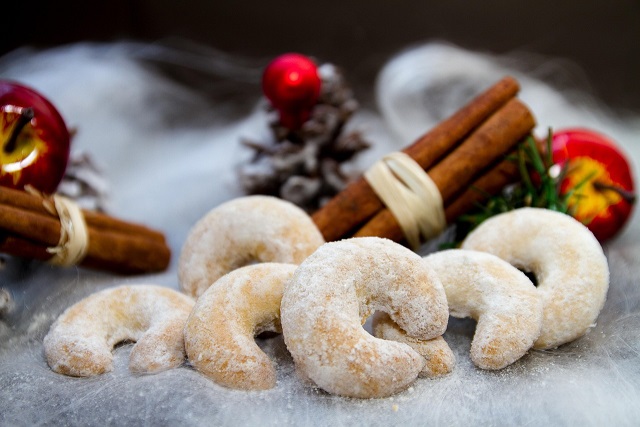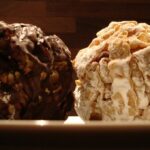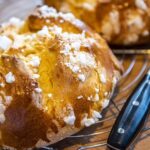
Vanillekipferl are delicate, crescent-shaped vanilla cookies, known for their buttery texture and almond flavor. Though commonly associated with Christmas, these cookies are also enjoyed during Easter and other festive occasions in Germany and Austria.
Made with ground almonds and butter, Vanillekipferl are light, crumbly, and dusted with vanilla sugar while still warm. They pair perfectly with coffee, tea, or a glass of warm milk.
This guide explores the history of Vanillekipferl, their significance in German baking, and a simple step-by-step recipe to make them at home.
History & Cultural Significance
The Origins of Vanillekipferl
Vanillekipferl originated in Austria and southern Germany, with roots dating back to the Austro-Hungarian Empire. The crescent shape is said to have been inspired by the Turkish crescent moon, symbolizing a historic victory over the Ottoman Empire.
Traditionally made with ground almonds, walnuts, or hazelnuts, these cookies became a holiday favorite across Europe. While they are best known as a Christmas treat, they are also popular at Easter and special family gatherings.
Want to explore more German holiday cookies? Check out Osternest-Kekse and Marzipan-Eier.
Ingredients & Preparation
Ingredients
- 250g (2 cups) all-purpose flour
- 100g (½ cup) sugar
- 200g (¾ cup) unsalted butter, cold and cubed
- 100g (1 cup) ground almonds or hazelnuts
- 1 tsp vanilla extract
- Pinch of salt
For Coating:
- 100g (1 cup) powdered sugar
- 2 tbsp vanilla sugar
How to Make Vanillekipferl
Step 1: Prepare the Dough
- In a large bowl, mix flour, sugar, ground almonds, and salt.
- Add cubed butter and vanilla extract, then knead until a smooth dough forms.
- Wrap the dough in plastic and chill for 30 minutes.
Step 2: Shape the Cookies
- Preheat oven to 175°C (350°F) and line a baking sheet with parchment paper.
- Roll the dough into small logs and shape them into crescents.
- Place on the baking sheet, spacing them slightly apart.
Step 3: Bake
- Bake for 12-15 minutes, or until golden at the edges.
Step 4: Coat with Vanilla Sugar
- While warm, roll cookies in a mixture of powdered sugar and vanilla sugar.
- Let cool completely before serving.
Serving Suggestions & Variations
How to Serve
Vanillekipferl are best enjoyed with:
- A cup of black tea or coffee
- A dusting of extra vanilla sugar before serving
- As part of an Easter or holiday cookie platter
Variations
In Austria, some versions use hazelnuts instead of almonds. In southern Germany, they are dipped in melted chocolate for a richer taste.
Want to try another classic German cookie? Check out Quarkhasen.
Vanillekipferl are buttery, nutty, and delicately sweet, making them a perfect addition to any Easter or holiday celebration. Whether dusted with vanilla sugar or dipped in chocolate, these cookies are a timeless favorite in German baking.
Looking for more traditional German treats? Try Marzipan-Eier, Osternest-Kekse, Schneeball, or Schokoladenhasen.







